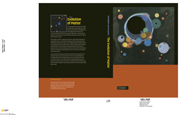Book contents
- Frontmatter
- Contents
- Introduction
- Part I The elements
- Part II Early solar system: nebula formation, evolution and lifetime
- Part III Accretion of the Earth
- 14 Introduction to the planetary system, Earth and Moon
- 15 Introduction to planetary accretion
- 16 Earth accretion: the giant impact(s)
- 17 The post-accretion silicate Earth: comparison with meteorites
- 18 Core segregation
- 19 Heavy “crust” on the top of the core
- 20 The early atmo-hydrosphere
- 21 Light from the Moon …
- Part IV Global evolution of the Earth
- References
- Glossary
- Abbreviations
- Meteorites, rocks and minerals
- Index
17 - The post-accretion silicate Earth: comparison with meteorites
Published online by Cambridge University Press: 04 September 2009
- Frontmatter
- Contents
- Introduction
- Part I The elements
- Part II Early solar system: nebula formation, evolution and lifetime
- Part III Accretion of the Earth
- 14 Introduction to the planetary system, Earth and Moon
- 15 Introduction to planetary accretion
- 16 Earth accretion: the giant impact(s)
- 17 The post-accretion silicate Earth: comparison with meteorites
- 18 Core segregation
- 19 Heavy “crust” on the top of the core
- 20 The early atmo-hydrosphere
- 21 Light from the Moon …
- Part IV Global evolution of the Earth
- References
- Glossary
- Abbreviations
- Meteorites, rocks and minerals
- Index
Summary
Introduction: principal reservoirs of the post-accretion Earth
Modelling of the compositional development of the Earth in the course of the giant Moon-forming impact predicts the loss of a minor fraction of the material of the merged bodies, within a few per cent of the total mass (Cameron, 2001b). This means that the terrestrial abundances of most elements were not substantially affected. However, the great amount of energy deposited by this and preceding impacts triggered two fundamental irreversible processes, which changed the chemistry of our planet. These were the segregation of the metal core (Chapter 18) and the loss of much of the primary content of atmophile species (Chapter 20).
After the giant impact, the enormous amount of heat generated by the impact itself and by the sinking of metal through the mantle would have led to a global magma ocean. However, in contrast with the Moon (Chapter 21), the Earth shows no chemical and isotopic evidence of fractionation such as would be expected if a magma ocean had existed. The answer to this problem lies in the nature of convection in the terrestrial magma ocean; this is discussed in Section 17.5.
The mixing of late-accreting chondritic matter (with a higher Fe-content, and thus higher density, than terrestrial silicate rocks) with post-segregation metal-free silicates in the mantle or protocrust could have generated material with an intermediate density.
- Type
- Chapter
- Information
- The Evolution of MatterFrom the Big Bang to the Present Day, pp. 214 - 230Publisher: Cambridge University PressPrint publication year: 2008



